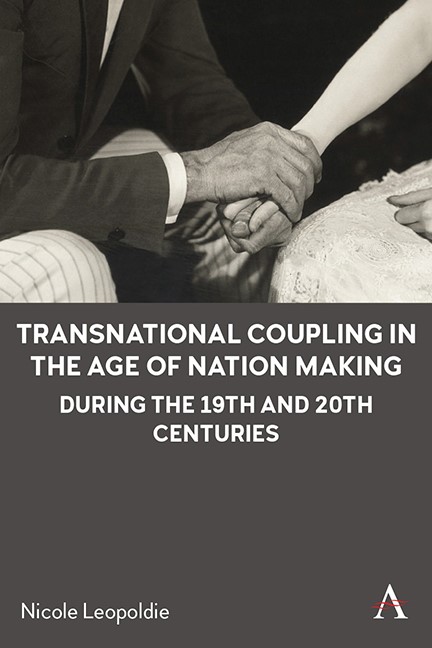Book contents
- Frontmatter
- Contents
- List of Figures
- Acknowledgements
- Introduction Marriage: National Borders and Personal Spaces
- Part I “Trading Titles for Treasure?”: Elite Marriages during the Nineteenth Century
- Part II “Paris is Free—and So Are Its Kisses”: Wartime Marriages during the Twentieth Century
- Conclusion
- Bibliography
- Index
2 - Emotional Dimensions of Elite Transnational Spaces
Published online by Cambridge University Press: 15 November 2023
- Frontmatter
- Contents
- List of Figures
- Acknowledgements
- Introduction Marriage: National Borders and Personal Spaces
- Part I “Trading Titles for Treasure?”: Elite Marriages during the Nineteenth Century
- Part II “Paris is Free—and So Are Its Kisses”: Wartime Marriages during the Twentieth Century
- Conclusion
- Bibliography
- Index
Summary
In Chapter 1, I argued that rather than attempts of nouveaux riches Americans to gain social status by participating in title-for-dollar exchanges, titled Franco-American marriages in the nineteenth century were instead the result of social interaction within elite transnational spaces that existed between the United States and Europe and among those who identified with others of similar economic and social status rather than national origin. What follows is a continued attempt to move beyond limited explanations of these elite marriages as mere socioeconomic arrangements by more closely examining the cultural and emotional dimensions of those spaces. Here, I argue that at the intersection of encounter, elite class-consciousness and transnational coupling stood a profoundly emotional experience, and because that experience was so intertwined with cross-cultural interaction, the marriages that emerged from these spaces can be, in many respects, characterized as even more (rather than less) emotional than their national counterparts.
This chapter is divided into four parts: In the first, I demonstrate how perceived notions of cultural difference within elite transnational social circles were the driving force of transnational elite marriages. As members of transnational high society encountered one another, perceived cultural stereotypes as well as processes of othering led to what I call cultural infatuation—affection not (only) for another person but for the perceived culture to which they belonged. This long-standing, mutual fascination between French and American members of high society created for many marriage participants a longing for the perceived “other.” In this section, I also examine the role that the perception of one’s own otherness in these spaces played into marriage motivation and the extent to which this too was a profoundly emotional issue. Thereafter, the second and third parts of the chapter go further to contextualize these marriages within broader emotional and cultural shifts in European and American societies as they pertained to marriage practices. Here, I examine elite cultural rituals of transnational courting and divorce patterns in order to demonstrate how their details confirm that the emotionalization of marriage practices—a process that had begun over the previous centuries—was already deeply rooted in elite society by the nineteenth century.
- Type
- Chapter
- Information
- Publisher: Anthem PressPrint publication year: 2023



